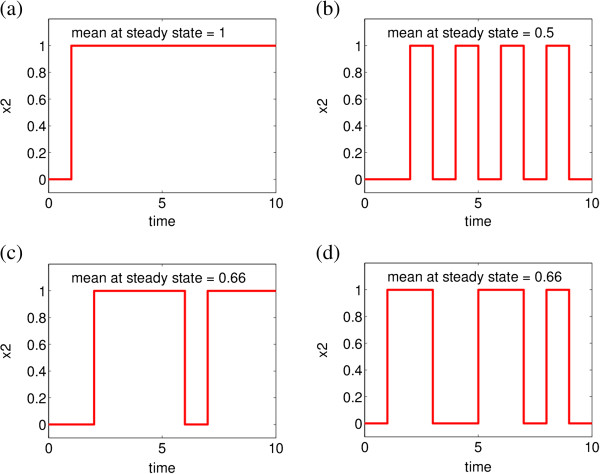Figure 4.
Dynamical simulations of node x2 of the example network in Figure2, with initial state k = 000. (a) Dynamics of x2 governed by the constituent BN corresponding to the transition function f1, where c1 = 1, c2 = c3 = c4 = 0. Starting from 000 the periodic attractor {011,111} is reached. The probability of {x2 = 1} given by the stationary distribution is 1. (b) Dynamics of x2 governed by the constituent BN corresponding to the transition function f4, where c4 = 1, c1 = c2 = c3 = 0. Starting from 000 the periodic attractor {001,111} is reached. The probability of {x2 = 1} given by the stationary distribution related to the reached attractor, i.e., (the states are considered in the lexicographical order), is 0.5. (c,d) Examples of x2 dynamics in the full PBN as given in Figure 2. Starting from 000 different trajectories are obtained for different simulation runs. The underlying Markov chain is ergodic and a unique stationary distribution, being the steady state (limiting) distribution, exists therefore. The steady state probability of {x2 = 1} is 0.66.

